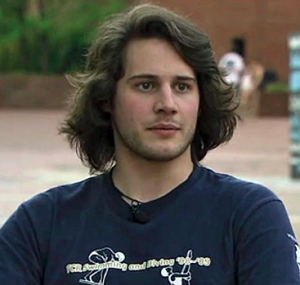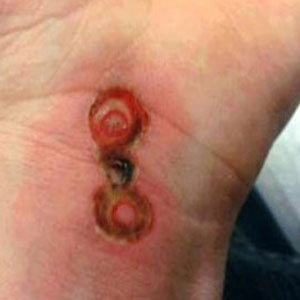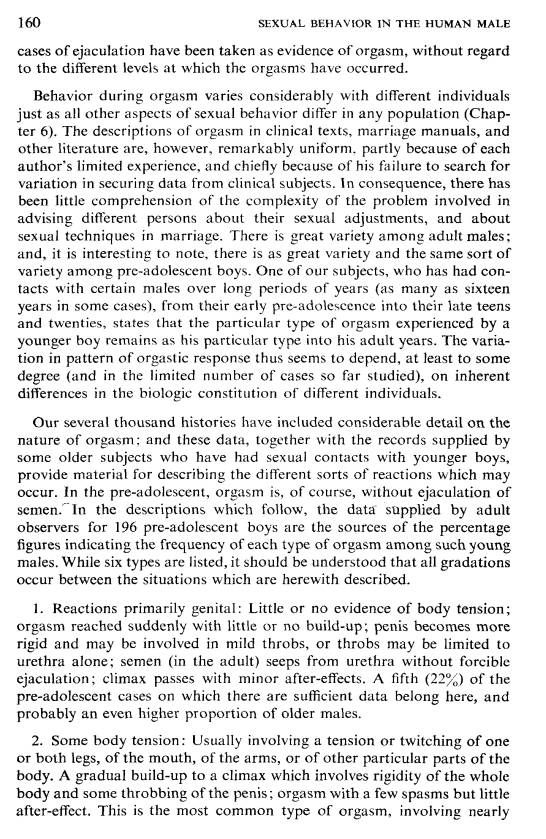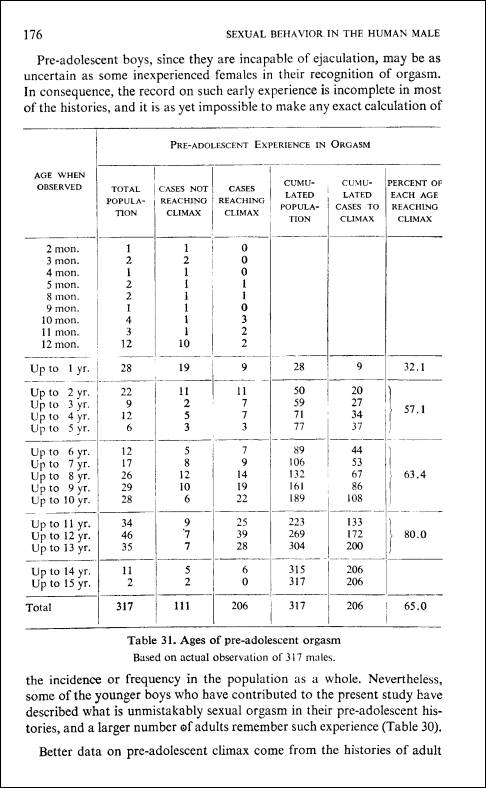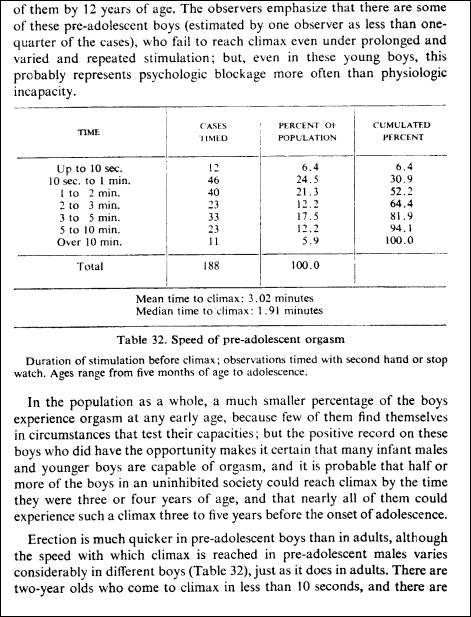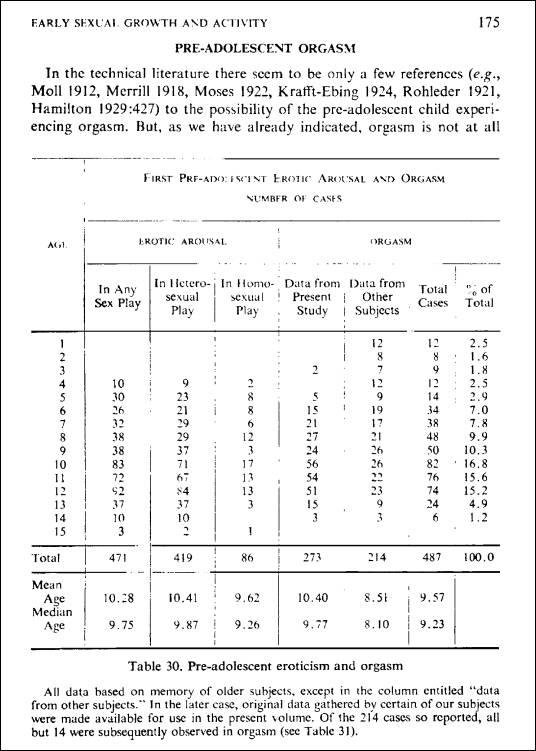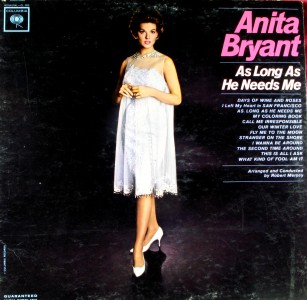By Father Nicanor Pier Giorgio Austriaco, Ph.D. – Reprint
In the past year, the clergy pedophilia scandal has reignited the debate over homosexuality. [1] The Catholic Church’s millennia-old teaching is clear: Homosexual activity is immoral because it is contrary to nature. [2] Not surprisingly, however, this counter-cultural position has come under much criticism in recent decades not only within the Church but also within other ecclesial communions. [3] One popular argument that is often put forward by revisionists is that the Church’s stance should be re-evaluated in light of new scientific evidence which suggest that homosexuality is a genetically inherited condition that is a permanent state. [4] Thus, it is claimed, homosexuality should be accepted as a natural variant within a wide spectrum of gender identities and sexual orientations, a manifestation of the richness of God’s creation. [5]
This essay will respond to this revisionist argument in three ways. First, it will critically examine the scientific evidence that has been used to argue for the genetic origins of homosexuality. In recent years, the scientific reports that originally proposed the existence of the so-called gay gene have been seriously questioned and discredited. Thus, today, the widely held belief that a single human gene exists that determines homosexual orientation remains a myth. Next, it will investigate the claim that homosexuality is both permanent and non-pathological by reviewing four recent studies that suggest that this may not the case.
First, a study authored by Robert Spitzer, a leading figure in the 1973 American Psychiatric Association (APA) decision that removed homosexuality from the official diagnostic manual of mental disorders, has now shown that with some form of reparative therapy, a few persons whose sexual orientation had been predominantly or exclusively homosexual became predominantly or exclusively heterosexual. Thus, it appears that at least in select cases, the homosexual orientation is not as permanent a state as it has been touted to be.
Second, three independent studies published in the past four years have also shown that homosexual and bisexual men and women are at greater risk of suicide and overall mental health problems than their heterosexual counterparts. These studies suggest that contrary to claims advanced by gay activists, homosexually active persons as a group appear to be less psychologically healthy than the general population. Finally, this essay will review the ethical argument that used the flawed scientific data to justify homosexual behavior. This argument is flawed, because it endorses too much. In fact, the same argument could be used to excuse many human behaviors that are immoral. Not insignificantly, one of these behaviors would include rape.
Is There a Human Gay Gene?
Revisionists often cite three scientific studies published in the early 1990s to prove that homosexuality is a genetically inherited condition. It is now clear that there were scientific problems with each of these reports that undermine the validity of their conclusions. [6]
First, in August of 1991, Simon LeVay, a scientist at the Salk Institute in San Diego, reported that a group of neurons in the hypothalamic region of the brain appeared to be twice as large in heterosexual men than in homosexual men. [7] Previous studies had suggested that the hypothalamus is a region of the brain involved in the regulation of sexual behavior in non-human primates. Furthermore, other studies had shown that these neurons are larger in men then in women. Thus, LeVay concluded that sexual orientation had a biological basis.
There are three problems with LeVay’s paper. First, LeVay compared the brain structures of 19 homosexual men with the brain structures of 16 men whom he presumed were heterosexual. However, he was unable to confirm the heterosexuality of the men in his control group. Significantly, six of these 16 presumed heterosexual men had died from AIDS, a disease whose transmission is often associated with homosexual behavior! Thus, it would not be surprising if some of LeVay’s presumed heterosexual men were in fact, homosexuals, a possibility which would seriously discredit the conclusions of his study. Second, LeVay obtained his brain samples from homosexual men who had all died from AIDS. In contrast, for his control group, he obtained brain samples from men who had died not only from AIDS (6 subjects) but also from a diversity of other causes (10 subjects).
As LeVay himself acknowledged, however, this raises a legitimate scientific question: Could the differences in the sizes of the neurons have been caused not by sexual orientation but by AIDS? This certainly is a possibility that was not definitively ruled out the study. Finally, LeVay concluded that the differences in neuronal size could explain homosexuality. In other words, they could be linked to a biological cause for a homosexual orientation. This, however, is an illegitimate conclusion arising from faulty logic. One alternative explanation for the differences in the sizes of the neurons in the hypothalamus is that homosexual behavior is the cause for rather than the effect of the difference in neuron size. To illustrate this, let us say that a scientist tells you that he has discovered that there is a difference in the size of the bicep muscles between weight lifters and pianists. Furthermore, he concludes that the large muscle mass is the cause for these men becoming muscle builders. What would you say? Would you not respond by pointing out that it is more likely to be the case that the large muscle mass was in fact not the cause for but the effect of muscle training? In the same way, LeVay’s study was unable to rule out the possibility that homosexual behavior was not caused by, but rather, caused the differences in neuronal cell size. In sum, in light of these significant problems, it is difficult to conclude with any certainty that homosexual orientation is caused in any way by the neurons of the hypothalamus.
Second, in December of 1991, John M. Bailey and Richard C. Pillard, reported that it was more likely for both identical twins to be homosexual than it is for both fraternal twins or for both adopted brothers. [8] They found that 52% (29 pairs out of 56) of the identical twins were both homosexual; 22% (12 pairs out of 54) of the fraternal twins were both homosexual; and 11% (6 of 57) of the adoptive brothers where both homosexual. Thus, Bailey and Pillard concluded that there is a genetic cause for homosexuality.
Again, there were significant problems with the study. First, if homosexuality is genetically determined, why did only 52% of the identical twins share the same sexual orientation? How about the other 48% of the twins who differed in their sexual orientation? How do we account for them? Second and more importantly, the study was based upon a sample of twins which was not random. As critics have pointed out, Bailey and Pillard did not rule out the possibility that they had preferentially recruited twins were both brothers were gay by advertising in homosexual newspapers and magazines rather than in periodicals intended for the general public. Indeed, it now appears that preferential recruitment did occur in the 1991 study – a more recent 2000 study by Bailey and his colleagues, using volunteers recruited, not from the gay community but from the Australian Twin Registry, revealed that only 20% and not 52% of identical twins share the same homosexual orientation. [9] This is not as significant a difference between identical and fraternal twins as earlier reported. Thus, as the authors of the 2000 paper conclude, it is very difficult to distinguish the genetic from the environmental influences on sexual orientation.
The third and most publicized study suggesting a genetic link for homosexual orientation was a paper published by Dean Hamer and his colleagues at the National Institutes of Health. The researchers studied 40 pairs of homosexual brothers and concluded that some cases of homosexuality could be linked to a specific region on the human X chromosome (Xq28) inherited from the mother to her homosexual son. [10] This study has come under much criticism – the Office of Research Integrity of the Department of Health and Human Services even investigated Hamer for alleged fraud in this study though it eventually cleared him [11] – and most significantly, has never been reproduced. In fact, two subsequent studies of other homosexual brothers have since concluded that there is no evidence that male sexual orientation is influenced by an X-linked gene. [12]
In sum, all the scientific evidence to date has not conclusively proven that genes determine homosexual orientation in human beings. The existence of a human gay gene remains a scientific myth. Thus gay activists are incorrect when they insist that science has proven that an individual with homosexual inclinations is “born that way.”
Is Homosexuality a Permanent Orientation?
Another claim often associated with the revisionist position that challenges the Church’s teaching is that homosexuality is a permanent state. A recent study, however, has challenged the truth of this belief. In a paper to be published in the journal, Archives of Sexual Behavior, Dr. Robert L. Spitzer, Professor of Psychiatry at Columbia University and chairman of the 1973 APA committee which recommended that homosexuality be removed from the official diagnostic manual of mental disorders, interviewed men and women who had experienced a significant shift from homosexual to heterosexual attraction and had sustained this shift for at least five years. [13] To his surprise, he discovered that contrary to his own expectations, some highly motivated individuals, using a variety of change efforts, were able to make a substantial change in multiple indicators of sexual orientation and achieve good heterosexual functioning. [14]
In his study of 200 individuals, Spitzer reported that after their change efforts, 17% of the men and 55% of the women interviewed claimed that they were now exclusively heterosexual in their orientation. Furthermore, 66% of the men and 44% of the women also reported that they had achieved good heterosexual functioning defined in the study as being in a sustained heterosexual relationship within the past year, rating emotional satisfaction from the relationship a seven or higher on a 10-point scale, and having satisfying heterosexual sex at least monthly. The study concluded that some change in sexual orientation is possible. It is the latest and the most sophisticated study that has shown that some change in sexual orientation is possible after therapy. [15]
Finally, two points should be made here to put the findings of the Spitzer study in a proper context. First, it is important to note that the subjects in the Spitzer study were not chosen at random from among homosexuals who had gone through therapy. Thus, the results should not be considered typical. As Spitzer himself remarked, a significant majority of his subjects were “highly motivated” to change. Second, given the difficulty he had in finding volunteers for his study, Spitzer has acknowledged that a complete change in sexual orientation is probably uncommon. Rather, according to Spitzer, a better way to conceptualize “sexual reorientation” is to see it as the diminishing of unwanted homosexual potential with a concomitant increase in the heterosexual potential of a particular individual.
Since the study was made public at the annual meeting of APA on May 9, 2001, the conclusions of Spitzer’s report have been heavily criticized both in the media and on the Internet. Typically, there are two main objections.
First, critics charge that the study did not include data on the subjects’ original sexual orientation. [16] Thus, they assert that the study could not rule out the possibility that all the individuals interviewed were not true homosexuals, who by definition are persons who are sexually attracted exclusively to members of the same sex. Hence, these critics assert that the study was probably limited to individuals who had had a bisexual orientation and had previously engaged in at least some homosexual activity. After therapy, these critics propose that the subjects remained bisexual though they now feel that they have successfully developed a relationship with a person of the opposite gender. Thus, they conclude that the sexual orientation of the subjects really did not change.
To respond to these critics, we should note that the study did report that 42% of the men and 46% of the women interviewed said that they were exclusively homosexual before they engaged in the reparative therapy. Furthermore, only 9% of the men and 26% of the women had opposite sex masturbatory fantasies before their treatment. Together, both these results do indicate that prior to therapy a significant number of the subjects were probably not bisexually orientated as the critics charge.
Second, critics charge that the study was limited to a very select group of individuals that is not representative of the gay community. The subjects were predominantly Evangelical Christians associated with groups who condemn homosexuality: Of those who participated in the study, 78 percent had spoken publicly in favor of efforts to convert homosexuals to heterosexuality; 93 percent said religion was “extremely” or “very” important in their lives. Critics conclude that these subjects were atypical and thus cannot be compared to the majority of persons in the gay community. To support their claim, critics contrast Spitzer’s study with another study reported by psychologists, Ariel Shidlo and Michael Schroeder, who found that the vast majority of the subjects in their group, individuals recruited through the Internet and direct mailings to groups advocating reparative therapy, reported failure in their efforts to change through reparative therapies. [17] As one commentator has noted, the members of this second study were probably not Christian since the study was supported by a pro-gay advocacy group. [18] Hence, these critics conclude that the Spitzer study is biased and thus, unreliable. Some even charge that the subjects of Spitzer’s study, given their anti-gay sentiments, probably lied about their behavior and exaggerated their success stories by constructing elaborate self-deceptive narratives.
To respond to these critics, Spitzer points out several things. First, if there was significant bias, one might expect that many subjects would report complete or near complete change in all sexual orientation criteria after therapy. Only 11% of the males and 37% of the females did so. One might also expect that many subjects would report a rapid onset of change in sexual feelings after starting therapy. In fact, subjects reported that it took, on average, a full two years before they noticed a change in sexual feelings. Next, if systematic bias was present, one would expect that the magnitude of the bias for females would be similar to that for males. However, marked gender differences were found. These gender differences are consistent with previously published literature suggesting greater female plasticity in sexual orientation. Thus, Spitzer concludes that it is reasonable to believe that the subjects’ self-reports in this study were by-and-large credible and that probably few, if any, elaborated self-deceptive narratives or lied. Finally, we should not neglect to point out that the importance of Christian faith in those subjects who were capable of reorientating their sexual behavior, rather than pointing to bias, may be proof that grace is a necessary element for any successful reparative therapy. As the Sacred Congregation for Doctrine of the Faith correctly noted, “As in every conversion from evil, the abandonment of homosexual activity will require a profound collaboration of the individual with God’s liberating grace.” [19]
Is the Homosexual Lifestyle a Healthy One?
Finally, revisionists often claim that both homosexual behavior and the homosexual lifestyle are completely harmless to the homosexual and to society at large. Activists pushing this perspective often point to the 1973 decision of the APA that removed homosexuality from the official diagnostic manual of mental disorders as support for their position. Three recent papers published in the peer-reviewed and well-respected journal, Archives of General Psychiatry, have now challenged this decision. In the first study, Herrell et al. used a powerful technique, the co-twin control method to look at the psychological health of homosexual men. [20] They studied 103 middle-aged male-male twin pairs where one brother reported male sex partners after age 18 years while the other did not. The study concluded that on average, male homosexuals were 5 times more likely to show suicide-related behavior or thoughts than their heterosexual counterparts. Significantly, most of the findings were valid even after the researchers accounted for the influence of substance abuse and depressive symptoms other than suicidality. The second study followed a large New Zealand group from birth to their early twenties. [21] Corroborating the first study, this independent report showed a significant increase of depression, anxiety disorder, conduct disorder, substance abuse and thoughts about suicide among those who were homosexually active. As one scientist commentator has pointed out, these two studies “contain arguably the best published data on the association between homosexuality and psychopathology, and both converge on the same unhappy conclusion: homosexual people are at a substantially higher risk for some forms of emotional problems, including suicidality, major depression, and anxiety disorder.” [22] Finally, the third and most recent paper showed that there was an increase in mental health problems associated with homosexual persons in the Netherlands. [23] Remarkably, HIV status was not a factor.
The authors of this study suggested that pressure from society may be a significant cause for the higher incidence of mental health problems found in homosexual persons. As one commentator has pointed out, however, this is not a persuasive argument because the observed differences in mental health status between homosexuals and heterosexuals are just as great in the Netherlands and in New Zealand, two societies which are relatively more tolerant of homosexuality, as they are in the United States, a society which is relatively not as tolerant. [24] If social ostracism is indeed a significant factor in influencing the mental health status of homosexual persons, then one would expect to see differences among societies with varying tolerances to homosexuality.
Can Homosexuality Ever Be Considered Natural?
According to revisionist theologians and gay activists, homosexuality is natural because it is genetic, permanent and non-pathological. As we have seen, however, scientific evidence exists to challenge all three of these assertions. Nevertheless, we should also acknowledge that it is still possible that some future study could discover a genuine link between a person’s genetic makeup and his sexual orientation. For one, numerous reports have now shown that homosexual behavior is more common in animals than previously suspected. [25] More likely than not, this behavior is probably rooted in the genetic constitution of these creatures. Furthermore, fruit flies have also been described whose sexual behavior has been altered because of a single genetic mutation that induces homosexual courtship in males. [26] These mutant male flies attempt to mate with other males rather than with females. Therefore, given these observations, it would not be surprising if genetics did play some role in influencing human sexual behavior. Hence, the questions arise: Would a future discovery of an authentic human gay gene undermine the Church’s moral teaching that prohibits homosexual activity? Would such a discovery not prove the revisionist argument that homosexual activity is natural and therefore not immoral? The answer to both these questions is no. To see why, we need to understand the moral reasoning that grounds the Church’s teaching on human sexuality.
The Church’s teaching on human sexuality is rooted in human reason illumined by faith. It attempts to do justice to the rich reality of the human person, created by God in his spiritual and bodily dimensions and heir, by grace, to eternal life. The Church teaches that as embodied spiritual creatures, human beings were created male and female so that in the complementarity of the sexes, they can reflect the inner unity of the Creator. This was recognized and confirmed by the Lord Jesus who instituted the sacrament of marriage to celebrate the divine plan of the loving and life-giving union of men and women. Therefore, as the Catechism of the Catholic Church teaches: “Sexuality, by means of which man and woman give themselves to one another through the acts which are proper and exclusive to spouses, is not something simply biological, but concerns the innermost being of the human person as such. It is realized in a truly human way only if it is an integral part of the love by which a man and a woman commit themselves totally to one another until death.” [27] The Catechism goes on to say that in the conjugal act, “the spouses’ union achieves the twofold end of marriage: the good of the spouses themselves, and the transmission of life. These two meanings or values of marriage cannot be separated without altering the couple’s spiritual life and compromising the goods of marriage and the future of the family. The conjugal love of man and woman thus stands under the twofold obligation of fidelity and fecundity.” [28] Thus, sexual activity is properly reserved to marriage, defined here as the permanent and lifelong union between one man and one woman.
Seen within the context of the Church’s vision of authentic human sexuality, homosexual activity is immoral because it is contrary to the creative wisdom of God and as such is unnatural. [29] To choose someone of the same sex for one’s sexual activity is to annul the rich symbolism and meaning, not to mention the goals, of the Creator’s sexual design. Same-sex union is not complementary union. It is unable to transmit life and so thwarts the call to a life of that form of self-giving which the Gospel says is the essence of Christian living. In other words, the union in same-sex union can never be the complete and total self-gift properly that is properly associated with the conjugal act because same-sex partners can never share their powers to procreate. The Church does note, however, that this does not mean that homosexual persons are not often generous and giving of themselves. However, when they engage in homosexual activity, they confirm within themselves a disordered sexual inclination that is essentially self-indulgent. It is behavior that prevents the human person from attaining his own fulfillment and happiness because it is contrary to the creative wisdom of God.
Returning to the questions raised by a possible future discovery of an authentic human gay gene, it is critical to realize that the Church’s teaching is not based upon a purely biological understanding of human nature. The human being is a person and not simply another animal. Thus, any authentic vision of human sexuality has to be rooted in a personalist understanding of the human person that does not lose sight of the truth that the human person is an embodied creature. As Pope John Paul II has noted, the natural law is called the natural law not because it refers to a generic nature common to all animal species but because it refers specifically to man’s proper and primordial nature, the “nature of the human person,” which is the person himself in the unity of soul and body, in the unity of his spiritual and biological inclinations and of all the other specific characteristics necessary for the pursuit of his end. [30] A man is created to give himself to a woman and vice versa. This is a truth inscribed in the very structure of their bodies. Neither the discovery of a gene for homosexual orientation nor the existence of homosexual behavior in non-human animal species changes this. The revisionist argument that attempts to use evidence from biology to justify homosexual activity is flawed because it fails to acknowledge that we are embodied persons, with both spiritual and biological inclinations that need to be respected and realized.
The revisionist argument is also flawed because it would allow too much. Gay activists often assert that homosexuality is natural because homosexual behavior has been observed in non-human animals. Recent research has also shown, however, that rape – called forced copulation by socio-biologists is common in nature. [31] For instance in wild orangutans, most copulations by immature males and almost half of all copulations by adult males occur after fierce female resistance has been violently overcome by the male. [32] According to the revisionist argument, the common occurrence of rape in other animal species would suggest that rape even in human societies should be considered natural. But this is false. Human sexuality involves free acts of self-giving which are best manifested in the complementary union of bodily persons that occurs during marital love. Regardless of what happens elsewhere in the animal kingdom, both rape and homosexual behavior are incompatible with an authentic understanding human personhood. They are unnatural because both are violations of our natures as embodied spiritual creatures. Both fail to realize the total self-gift of persons that ought to accompany every sexual act. We are persons and this makes all the difference in the world.
Conclusion
Science is often used to argue that the Church needs to revise her teaching on homosexuality. Ironically, recent research has now suggested that many of the presuppositions accepted as dogma by gay activists in our society may themselves have to be revised. At the time of this writing, there is still no conclusive evidence that homosexuality is genetically determined. Thus, it is still impossible to know whether someone who has homosexual inclinations was in fact “born that way.” Next, as Dr. Robert Epstein, the editor-in-chief of Psychology Today pointed out in a recent editorial, the newly published scientific data reviewed in this essay suggest that there is a need to reopen the question – can gays change? – and revisit the issue of sexual conversion and ex-gays. [33] Reparative therapy may be more successful than previously acknowledged especially when it is coupled with religious faith. Finally, the claim that homosexuals are as mentally healthy as heterosexuals is simply not true. Though the source of the psychopathology is not yet clear, homosexual activity is associated with higher rates of depression, anxiety disorder, conduct disorder, substance abuse and suicide.
ACKNOWLEDGEMENTS:
I thank Christopher M. McCullough and the members of the Young Adult Group of the Cathedral of St. Matthew the Apostle in Washington, DC, for providing the motivation for the researching and writing of this article; Dr. Robert L. Spitzer of Columbia University, for an advance copy of his paper; and Professor William E. May and several of my Dominican brothers for helpful comments on the manuscript.
NOTES
1. As the task force of the Catholic Medical Association on homosexuality has pointed out, the clergy pedophilia scandal is really a homosexuality scandal since 90% of the cases of priestly sexual abuse of males are with adolescents. See Task Force on Homosexuality of the Catholic Medical Association, “A Contribution to the Debate About the Ordination of Homosexuals,” Linacre Quarterly 69 (2002): 190-197, p. 191. A study of sex abuse cases carried out by The New York Times reports that for 80% of the cases where the information is available, it is clear that the abuse victims were male. This percentage is nearly opposite for laypeople accused of abuse. Their victims are mostly female. See Laurie Goodstein, “Trail of Pain in Church Crisis Leads to Nearly Every Diocese,” The New York Times, January 12, 2003, p. 20.
2. “Basing itself on Sacred Scripture, which presents homosexual acts as acts of grave depravity (cf. Gen. 19:1-29; Rom. 1:24-27; 1 Cor 6:10; 1 Tim 1:10), tradition has always declared that homosexual acts are intrinsically disordered. They are contrary to the natural law. They close the sexual act to the gift of life. They do not proceed from a genuine affective and sexual complementarity. Under no circumstances can they be approved.” Catechism of the Catholic Church, no. 2357. Also see the magisterial document, Letter to the Bishops of the Catholic Church on the Pastoral Care of Homosexual Persons published by the Sacred Congregation for the Doctrine of the Faith, Origins 16 (1986): 377-382.
3. For discussion, see Keith Hartman, Congregations in Conflict: The Battle Over Homosexuality (New Brunswick, NJ: Rutgers University Press, 1996). For a recent and extensive review of the debate among Catholic moral theologians, see James F. Keenan, SJ, “The Open Debate: Moral Theology and the Lives of Gay and Lesbian Persons,” Theological Studies 64 (2003): 127-150.
4. For example, Chandler Burr has written: “Five decades of psychiatric evidence demonstrates that homosexuality is immutable and nonpathological, and a growing body of more recent evidence implicates biology in the development of sexual orientation. Some would ask: How can one justify discriminating against people on the basis of such a characteristic? And many would answer: One cannot.” See his “Homosexuality and Biology,” in Homosexuality in the Church, ed. Jeffrey S. Siker. (Louisville: Westminster John Knox Press, 1994), p. 132.
5. As psychotherapist and former Jesuit priest, John J. McNeill has stated: “I proposed instead that God so created humans that they develop with a great variety of both gender identities and sexual-object choices. […] Always and everywhere, a certain percentage of men and women develop as homosexuals or lesbians. They should be considered as part of God’s creative plan.” See his “Homosexuality: Challenging the Church to Grow” in Homosexuality in the Church, ed. Jeffrey S. Siker. (Louisville: Westminster John Knox Press, 1994), p. 50. Also see his often cited book, The Church and the Homosexual 4 th edn. (Boston: Beacon Press, 1994).
6. For an insightful critique of these studies written before some of the newer scientific papers mentioned in this essay were published, see Jeffrey Satinover, “The Biology of Homosexuality: Science or Politics?” in Homosexuality and American Public Life, ed. Christopher Wolfe (Dallas: Spence Publishing Company, 1999), pp. 3-61.
7. Simon LeVay, “A Difference in Hypothalamic Structure Between Heterosexual and Homosexual Men,” Science 253 (1991): 1034-1037.
8. J. M. Bailey and R. C. Pillard, “A Genetic Study of Male Sexual Orientation,” Archives of General Psychiatry 48 (1991): 1089-1096.
9. J. Michael Bailey, Michael P. Dunne, and Nicholas G. Martin, “Genetic and Environmental Influences on Sexual Orientation and Its Correlates in an Australian Twin Sample,” J. Personal Social Psychology 78 (2000): 524-536.
10. D. H. Hamer et al., “A Linkage Between DNA Markers on the X Chromosome and Male Sexual Orientation,” Science 261 (1993): 321-327. Also see the follow-up paper, S. Hu et al., “Linkage between sexual orientation and chromosome Xq28 in males but not in females,” Nat Genet 11 (1995): 248-256; and Dean Hamer’s book, The Science of Desire: The Search for the Gay Gene and the Biology of Behavior (New York: Simon & Schuster, 1994).
11. “No Misconduct in ‘Gay Gene’ Study,” Science 275 (1997): 1251.
12. J. M. Bailey et al., “A Family History Study of Male Sexual Orientation Using Three Independent Samples,” Behavior Genetics 29 (1999): 79-86; and G. Rice et al., “Male homosexuality: absence of linkage to microsatellite markers at Xq28,” Science 284 (1999): 665-667.
13. Robert L. Spitzer, “Can Some Gay Men and Lesbians Change Their Sexual Orientation? 200 Subjects Reporting a Change from Homosexual to Heterosexual Orientation,” Archives of Sexual Behavior, forthcoming.
14. For a comprehensive and recent overview of reparative therapy for male homosexuality, see Joseph Nicolosi, Reparative Therapy of Male Homosexuality: A New Clinical Approach (Northvale, NJ: Jason Aronson, Inc., 1997). For case stories of reparative therapy, see Joseph Nicolosi, Healing Homosexuality: Case Stories of Reparative Therapy (Northvale, NJ: Jason Aronson, Inc., 1993).
15. For a review of the literature, see Warren Throckmorton, ” Initial empirical and clinical findings concerning the change process for ex-gays,” Professional Psychology: Research & Practice 33 (2002): 242-248.
16. For a typical critique of the Spitzer study, see B. A. Robinson, “Analysis of Dr. Spitzer’s Study of Reparative Therapy” at http://www.religioustolerance.org/hom_spit.htm. Last accessed on February 19, 2003.
17. Ariel Shidlo and Michael Schroeder, “Changing sexual orientation: A consumer’s report,” Professional Psychology: Research & Practice 33 (2002): 249-259.
18. See B.A. Robinson, “Studies of Reparative and Similar Therapies: An Overview” at http://www.religioustolerance.org/hom_exod2.htm. Last accessed on March 7, 2003.
19. CDF, On the Pastoral Care of Homosexual Persons, no. 11.
20. R. Herrell et al., “Sexual orientation and suicidality: a co-twin control study in adult men,” Arch. Gen. Psychiatry 56 (1999): 867-874.
21. D. M. Fergusson, L.J. Horwood and A. L. Beautrais, “Is sexual orientation related to mental health problems and suicidality in young people?” Arch. Gen. Psychiatry 56 (1999): 876-880.
22. J. Michael Bailey, “Homosexuality and Mental Illness,” Arch Gen. Psychicatry 56 (1999): 883-884, p. 883.
23. T.G. M. Sandfort et al., “Same-sex sexual behavior and psychiatric disorders,” Arch. Gen. Psychiatry 58 (2001): 85-91.
24. N.E. Whitehead, “Homosexuality and Mental Health Problems,” NARTH bulletin 11(2002):25-28. Available at www.narth.com/docs/whitehead.html. Last accessed on March 7, 2003.
25. For an exhaustive survey of these animal studies, see Bruce Bagemihl, Biological Exuberance: Animal Homosexuality and Natural Diversity (New York: St. Martin’s Press, 2000).
26. L. C. Ryner et al., “Control of male sexual behavior and sexual orientation in Drosophila by the fruitless gene,” Cell 87 (1996): 1079-1089.
27. CCC, no. 2361.
28. CCC, no. 2363.
29. This paragraph is indebted to the magisterial document, On the Pastoral Care of Homosexual Persons, no. 7. For a comprehensive explanation and defense of the Church’s teaching on homosexuality, see Mark S. Latkovic, ” Homosexuality, Morality, and the Truth of Church Teaching,” The Catholic Truth 6 (2000): 29-33. Available at http://www.catholic.net/rcc/Periodicals/Faith/Jan-Feb00/Morality.html. Last accessed on March 7, 2003. Also see the excellent book by John F. Harvey, OSFS, The Truth about Homosexuality: The Cry of the Faithful (San Francisco: Ignatius Press, 1996). Veritatis splendor, no. 50.
30. Veritatis splendor, no. 50.
31. For a review of the literature, see T.H. Clutton-Brock and G.A. Parker, “Sexual Coercion in Animal Societies,” Anim. Beh. 49 (1995): 1345-1365.
32. J.C. Mitani, “Mating Behaviour of Male Orangutans in the Kutai Reserve, Indonesia” Anim. Beh. 33 (1985): 392-402.
33. Robert Epstein, “Editorial: Am I Anti-Gay?” Psychology Today 36 (2003): 7-8
Fr. Nicanor Pier Giorgio Austriaco, O.P., received his Ph.D. in Biology from M.I.T. in 1996 and his S.T.L. from the Dominican House of Studies in 2005. He currently serves as an assistant professor of biology and adjunct professor of theology at Providence College in Providence, Rhode Island. He can be contacted at naustria@providence.edu







